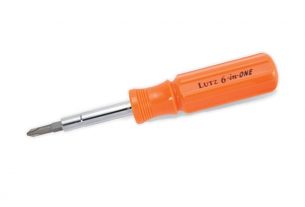As technology continues to advance, more and more tools are being developed to make our lives easier. One such tool that has become increasingly popular in recent years is the driver’s navigation tool. This device helps drivers navigate unfamiliar roads and get to their destination safely and efficiently. In this article, we will explore the benefits of using a driver’s navigation tool and how it can improve your driving experience.
What is a Driver’s Navigation Tool?
A driver’s navigation tool is an electronic device that uses GPS (Global Positioning System) technology to provide drivers with turn-by-turn directions to their destination. It can be mounted on the dashboard or windshield of your car, or it can be integrated into your car’s existing infotainment system. Some models also come with voice-activated controls, allowing you to keep your hands on the wheel while navigating.
Benefits of Using a Driver’s Navigation Tool
1. Improved Safety
One of the biggest benefits of using a driver’s navigation tool is improved safety. With turn-by-turn directions, you can focus on the road ahead instead of looking at maps or trying to figure out which way to turn. This reduces distractions while driving and minimizes the risk of accidents caused by distracted driving.
2. Time-Saving
Another benefit of using a driver’s navigation tool is time-saving. With real-time traffic updates, you can avoid congested areas and take alternative routes to get to your destination faster. You can also save time by not getting lost and having to backtrack to find your way.
3. Convenience
Using a driver’s navigation tool is convenient, especially when traveling in unfamiliar areas. You don’t have to rely on paper maps or ask for directions from strangers, which can be time-consuming and frustrating.
4. Cost-Effective
Investing in a driver’s navigation tool may seem like an expensive proposition, but it can actually save you money in the long run. By avoiding traffic and taking more efficient routes, you can save on fuel costs and reduce wear and tear on your vehicle.
Types of Driver’s Navigation Tools
1. Standalone GPS Devices
Standalone GPS devices are portable units that can be mounted on your car’s dashboard or windshield. They come with preloaded maps and are powered by batteries or a car charger. Some models also come with additional features such as lane guidance, speed limit alerts, and points of interest.
2. Smartphone Navigation Apps
Smartphone navigation apps use your phone’s GPS to provide turn-by-turn directions to your destination. They can be downloaded for free or purchased from app stores, and some even offer real-time traffic updates. However, they require a data connection to function properly and can drain your phone’s battery quickly.
3. In-Car Navigation Systems
In-car navigation systems are built-in units that come with certain car models or can be installed by an authorized dealer. They are integrated into the car’s infotainment system and display directions on the car’s touchscreen display. Some models also come with voice-activated controls and real-time traffic updates.
Choosing the Right Driver’s Navigation Tool
When choosing a driver’s navigation tool, there are several factors to consider:
1. Price: GPS devices vary in price from $50 to over $500, depending on the features they offer. Smartphone apps are cheaper, but may require additional data charges.
2. Features: Look for features such as real-time traffic updates, lane guidance, speed limit alerts, and points of interest.
3. Ease of Use: Choose a device that is easy to set up and use while driving.
4. Compatibility: Make sure the device is compatible with your car’s make and model.
5. Brand Reputation: Choose a reputable brand with good customer reviews.
Conclusion
A driver’s navigation tool is a must-have for safe and efficient driving. It can improve safety, save time, and provide convenience while traveling. There are several types of driver’s navigation tools to choose from, each with its own set of features and benefits. When choosing a device, consider factors such as price, features, ease of use, compatibility, and brand reputation.
References:
1. “GPS Navigation: How it Works and How to Choose the Right System.” Consumer Reports, 5 Sept. 2019, www.consumerreports.org/gps-navigation/gps-navigation-how-it-works-and-how-to-choose-the-right-system/.
2. “The Benefits of Using a GPS Navigation System.” Geotab, 19 Mar. 2018, www.geotab.com/blog/benefits-of-gps-navigation-system/.




